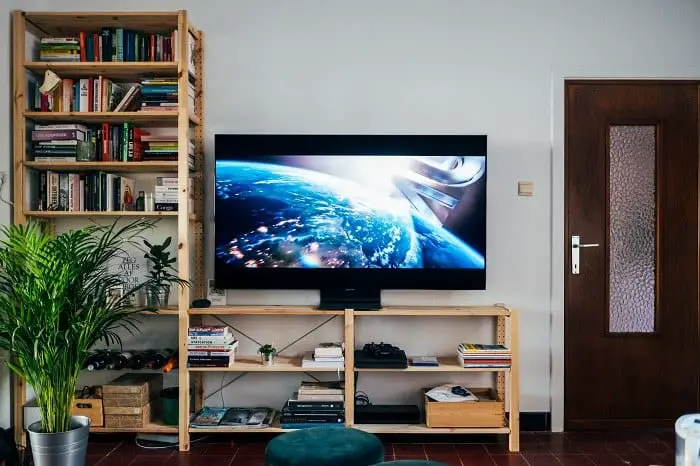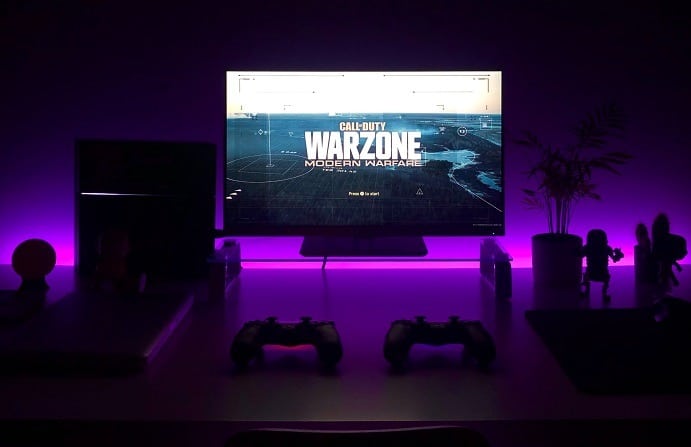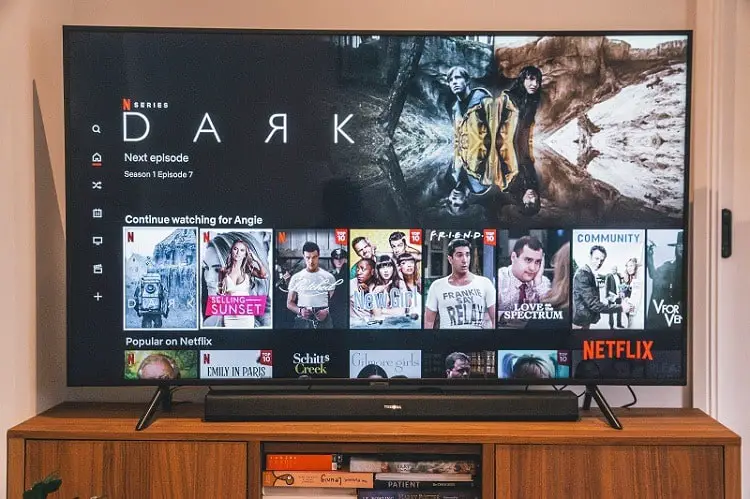Has it ever occurred to you that your monitor just went off all of a sudden? This type of technical problem is rather common to come across. However, we’re always looking out for ways to solve our problems one way or another. If you have a TV, you might have thought, can I use my Samsung TV as a computer monitor?
Surprisingly, yes. You can use your Samsung TV as a computer monitor via HDMI, DP, or even VGA. However, there might be some complications you might come across as a TV can have problems with connections and input lags.
Luckily, there are also ways to prevent these complications. We’ve mentioned all the ins and outs of using a Samsung TV as a monitor. To know the methods of installation and prevention of issues, read on.
Is It Possible To Use My Samsung TV As A Computer Display?
It’s possible to utilize television as a computer monitor. Today’s TVs drop more pixels into lesser screen areas and answer more to mouse or touchpad inputs quicker than usual. Most Samsung LCD TVs can now use as a computer display in addition to watching the news, playing DVDs, and playing games.
Casting is a major game-changer when it comes to using a Television as a computer monitor. If you have gadgets like Google Chromecast or Miracast, you can turn your living space into a home office that you can work in whenever you want to.
In general, a monitor is preferable to a television. Since displays are mainly built to improve your computer’s operations, a quality monitor won’t suffer lag nearly as frequently as a TV since it’s developed to minimize input delay.
But, don’t worry; you can always use your Samsung Smart TV as a monitor because they include HDMI support. This will allow you to link your pc or laptop via HDMI cable. Except for HDMI, there are many other convenient ways to connect your pc to the TV, which we will uncover shortly.
Things to Consider Before Connecting Your Samsung TV to Monitor
First and foremost, to utilize your TV as a monitor, you must link your computer to it. The majority of people are not aware of the considerations they should make before using their television as a computer monitor.
We’ve gathered a list of matters to consider before connecting your Samsung television to a monitor. Such as-
Pixel Density
A pixel density of 90-110ppi is ideal for Windows. If a monitor’s pixel density is substantially higher, things and text will appear very small and may be difficult to read.
The pixel density is the most important thing to consider. With increasing visual range, pixel density becomes less important. For a pleasant visual quality, the pixel density needs to be reduced the far you sit from a monitor.
A 15.6-inch/141.21ppi display should be no problem to view from 2 feet away, but viewing a 32-inch/68.84ppi display from the same distance will be much more difficult.
Users usually sit between 2 and 3 feet away from a computer display. Go for 80ppi or above to watch a display effectively at this distance. Remember to see and change your settings before you connect your Samsung TV.
Input Lag
The gap between what you touch on your input gadget and what appears on your screen is known as input lag. While most desktop monitors place a premium on low lag times, HDTVs don’t. Instead, they put a premium on video analysis.
Display Lag keeps an up-to-date record of input lag durations that can be sorted by display type. If you’re employing it as an HDTV, an input latency of fewer than 30 milliseconds is regarded as good.
Go for less than 20 milliseconds for achieving the same results as a desktop monitor, and the lesser you can reach, the more preferable.
Response Time
Response time, which is often mistaken for input latency, refers to how long it requires for a display’s pixels to alter colors between sequences. The response times of HDTVs and computer screens can be drastically different.
HDTV’s standard features are wealthier colors, more excellent contrast, and broader viewing angles. All of these factors contribute to a prolonged response time. Computer displays often sacrifice certain picture analysis and visual comfort for quicker response times.
If you utilize a monitor with a slow reaction time, you might notice “ghosting” in fast-paced video and gaming sequences.
Refresh Rate
The refresh rate of a monitor is another aspect that might affect efficiency. Most advanced displays’ refresh rate is 60Hz, which implies the image is refreshed 60 times every sec.
An HDTV with a fast claimed refresh rate can employ post-processing techniques to reach that rate, including introducing black frames between every frame to prevent visual blur or producing additional frames to upscale material.
The great news is that unless you’re running PC games at really high frame rates, this shouldn’t make an impact.
Nevertheless, if your computer was built for the most satisfactory gaming performance, using an HDTV rather than a computer display means you’re not receiving the least out of it.

Methods To Follow To Use Samsung TV As A Computer Monitor
Most of us now use our smart TV as a computer monitor. But most noticeably, some of us don’t know the perfect methods to follow while using Samsung TV as a PC monitor. And for not learning it in an ideal way, we may create a massive fuss about it.
For making things easy for you, here we have compiled four methods for how you can use your Samsung TV as a computer monitor.
Method-1: Linking through HDMI
An HDMI (High Definition Multimedia Interface) linkage is the most popular type of connection. On your Samsung TV and pc, search for the HDMI port. Of course, having more of these ports is an advantage.
To hook up your pc to your Samsung TV, you have to link the two ports with an HDMI cable. Then, using the HDMI cable, connect the TV and PC.
Method-2: Connection through VGA
The first step in using any smart television as a monitor is to determine which port your television has. You can easily connect your television to your computer if it has a VGA connector.
A VGA cable is required for this. So, connect your VGA cable to your TV port and gently secure it. Connect the other end to your CPU’s VGA port and carefully tighten it.
The next step is to turn on both your TV and your CPU. The display will be detected automatically.
Method-3: Connect through DVI
This is the most uncommon of them all. DVI (Digital Visual Interface) is HDMI’s and DP’s forerunners. DVI does not support audio. So, if you’re using a DVI connection, you’ll need to add an audio cable to get sound on your Samsung TV.
Method-4: Connection through DisplayPort
DisplayPort is more potent than HDMI. It isn’t as well-known as HDMI, but it can transport more data. Another benefit of a DP connection is the ability to connect several displays. This will make the Smart TV load the picture faster.

What are the Problems With Using a TV as a Monitor?
Well, as each coin has two sides, everything has both positive and negative sides, and so does the TV. Here are some of the issues you may face:
- Fewer Connectivity Issues
Media from your pc is displayed on your television or monitor through HDMI. HDMI is the industry interface, so you’ll see it on almost all computer monitors.
Moreover, HDMI is not built into every monitor. Some people link their devices using DisplayPort or other methods. If not done correctly, these differences in connectivity could make your setup more complex.
- Extra Large
Ensure the resolution fits your setup if you have a large TV display. Up close, a large screen with 1080p resolution placed on a desk can appear hazy.
Blurred visuals will not only tire your eyes, but they will also make you move your head frequently while watching, playing, or working.
- Lower refresh rates
Keep in mind that utilizing a TV as a monitor will result in a low refresh rate. If the display’s refresh rate is set very low, you may see a “redrawing” of the image, which we see as a flicker. Display flickering is distracting to watch and can cause eye stress and migraines.
- Input Lag
When utilizing a TV as a monitor, you will experience input lag. Input lag happens when your television does excessive image compression, causing actual input from your item to take longer than normal to appear on the monitor.
FAQs
- Can you use a TV as a gaming monitor?
Yes, you may use your television as a computer monitor to play games. Televisions are now available for both. Gaming as well as general use, However, they are pricey, and it’s more efficient to use a Gaming monitor for gaming instead of a TV.
- Can you use a 24-inch TV as a computer monitor?
Yes. You can use a 24-inch TV as a computer monitor, but you may require a special cable based on your PC’s outputs and your HDTV’s inputs. Without the cable, you won’t get the display or response time, which will hinder your experience of using a TV as a computer monitor.
- What size is the TV best for gaming?
You can always go for 32 – 55 inches TVs. For gaming, a 43–55-inch TV is ideal. Ensure that your visual distance is correct.
- Does TV size affect FPS?
No. FPS isn’t affected by the size of the monitor. Efficiency has nothing to do with the size of the screen. However, keep in mind whether the TV is extra-large or not. The resolution might get affected when the TV is extra large.
Final Words
It’s often a curiosity that comes to mind, which is, can I use my Samsung TV as a computer monitor? Because, how cool does it sound that we can use our large TV as a monitor?
As Samsung is known for doing wonders, it’s not surprising that you can use the Samsung TV as a monitor. Now that you’ve known all the methods you can apply, and the complications you might face, it should become easy for you to connect your Samsung TV as a computer monitor.
Good luck.

Hello Good People! This is Pavel and Welcome to PC Delight!
I’m an Electronics Engineer by profession with a passion for Gaming & PC builds. When I came up with the idea for PC Delight, it was my goal to share & offer the very best PC building ideas to tech-loving people like myself.
Since my school days, I’ve been just addicted to gaming & PCs. That leads me to experiment with various ways around the very niche, resulting in great productivity. And I’m here to share those practical experiences. So that next time you start some experiment with your PC builds or struggle to cope with a certain game, I’m here with the solutions. With these philosophies, I started my journey in 2017 and just kept going.

It is too bad anyone from Samsung, does not understand the importance of talking with real people. Your reputation is suspect since your customer service actually ranks a .4 (point 4) and to submit a review you have to give a 1; So truthfully your review should subtract 1 entire point since it is required! Still cannot find way to talk to anyone about product and its capabilities. Probably will exclude them from any future bids!!